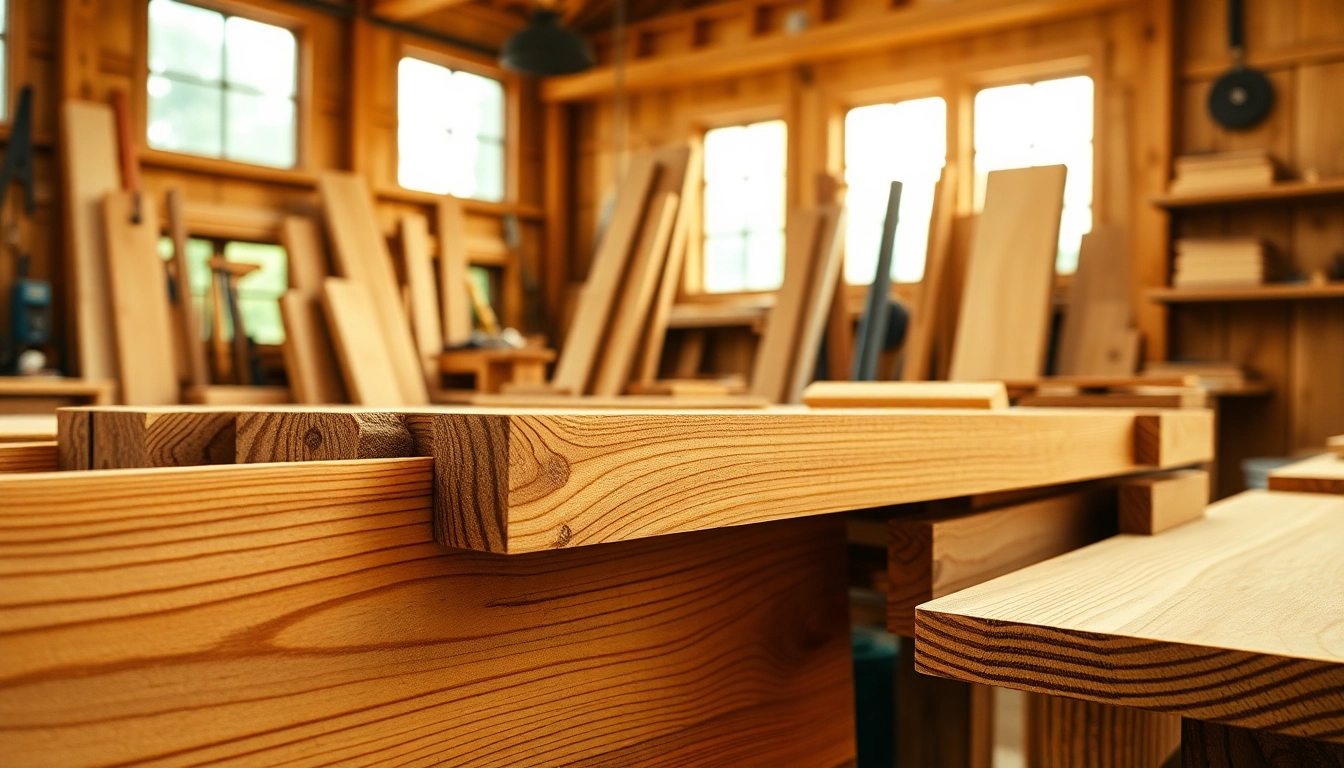Understanding Carpentry: Skills, Tools, and Techniques
Carpentry is a cornerstone of the construction industry, blending artistry, technical skill, and craftsmanship to create functional and aesthetic structures from wood and other materials. As a skilled trade, carpentry encompasses a wide range of activities—from framing buildings to intricate finish work—demanding both technical knowledge and practical expertise. Historically, carpentry has evolved from simple timber framing techniques used in ancient civilizations to the highly specialized practices observed in modern construction. Today, it continues to innovate through new tools, techniques, and sustainable practices. Whether you’re a budding apprentice, a seasoned professional, or a homeowner seeking quality craftsmanship, understanding the core elements of carpentry equips you with the knowledge to appreciate, evaluate, and execute quality work.
For those interested in pursuing a career or engaging professional services, exploring the breadth of this craft reveals the depth of skills and tools required. To further explore career opportunities, training programs, and certifications, visit carpentry providers who uphold standards of excellence in this industry.
Historical development of carpentry as a skilled trade
Carpentry dates back thousands of years, originating from prehistoric timber framing used to construct shelters and tools. In ancient Egypt, Greece, and Rome, carpentry techniques advanced significantly, integrating precise joinery and architectural innovation. The Middle Ages saw the development of guilds that standardized practices, ensured quality, and promoted craftsmanship. During the Renaissance, the profession gained recognition as both a trade and an art form, especially in magnificent structures like cathedrals and palaces with elaborate woodwork.
The Industrial Revolution introduced mechanization and new materials, transforming traditional manual methods. The advent of power tools, from saws to drills, greatly increased efficiency while maintaining craftsmanship standards. Modern carpentry now balances traditional craftsmanship with technological innovations such as CNC machinery and computer-aided design (CAD). This historical progression underscores a continuous evolution driven by technological advances and aesthetic demands, shaping a profession that values both artistry and precision.
Basic tools every carpenter needs
A well-equipped carpenter relies on a diverse array of tools tailored to different phases of construction and finishing. Fundamental hand tools include:
- Measuring and marking: Tape measure, square, chalk line, and a pencil for precise measurement and layout.
- Cutting tools: Handsaws, backsaws, and utility knives for accurate cutting of wood and materials.
- Joining tools: Clamps, chisels, and mallets to secure and shape joints.
- Fastening: Hammers, nail guns, screwdrivers, and wrenches to assemble components.
- Power tools: Circular saws, jigsaws, drills, and routers to expedite complex cuts and shaping tasks.
- Finish tools: Sanders, detail knives, and brushes for surface finishing and detailing.
In addition to tools, safety equipment such as goggles, ear protection, dust masks, and sturdy gloves are imperative to protect workers from hazards. Modern carpenters also utilize digital tools like laser levels and digital calipers to improve precision. Investing in high-quality, durable tools ultimately results in better craftsmanship and project longevity, emphasizing the importance of reliability and safety in every workspace.
Core techniques: framing, joinery, finishing
Framing
Framing forms the structural backbone of most building projects, involving the assembly of skeletal frameworks from timber or metal studs. This process requires precise layout, vertical and horizontal supports, and secure connections to ensure stability and load distribution. Modern framing employs techniques such as platform framing and balloon framing, with attention to building codes and seismic safety considerations.
Joinery
Joinery is the art and science of connecting wood components without nails or screws, relying on techniques like dovetails, mortise and tenon, and finger joints. Expert joinery ensures strength, durability, and aesthetic appeal, often used in cabinetry, furniture, and detailed trim work. Advanced joinery techniques combine traditional craftsmanship with modern adhesives and fasteners, expanding the possibilities for intricate designs.
Finishing
Finishing encompasses surface preparation, sanding, staining, sealing, and applying protective coatings. This phase transforms raw wood into polished, visually appealing elements. Precision in finishing not only enhances aesthetic value but also increases resistance to environmental damage. Modern finishing techniques may include airbrushing, veneering, and eco-friendly sealants, aligning with sustainability goals.
Types of Carpentry and Common Projects
Residential carpentry: cabinets, decks, framing
Residential carpentry focuses on home construction and improvement projects. It includes framing new walls, installing doors and windows, building decks and patios, and creating custom cabinetry. Interior finish carpentry such as trim, molding, and staircases also falls under this category. Homeowners increasingly demand personalized solutions, prompting carpenters to develop skills in bespoke woodworking and efficient space utilization.
Commercial carpentry: framing, renovations, custom millwork
Commercial projects typically involve larger-scale construction, including office buildings, retail spaces, and industrial facilities. Carpenters in this sector often work on structural framing, installing large-scale assemblies, and upgrading existing spaces through renovations. Custom millwork—such as reception desks and wall paneling—requires high precision and aesthetic finesse, emphasizing quality and adherence to commercial standards.
Specialized carpentry: finish, trim, cabinetry, and decorative work
Specialized carpentry entails detailed work that enhances the visual and functional appeal of a space. Finish carpenters focus on detailed moldings, decorative trim, crown molding, and intricate wood inlays. Cabinetmakers craft custom kitchen cabinets, bathroom vanities, and built-in furniture, often incorporating ergonomic and aesthetic considerations. Decorative carpentry combines traditional handwork with modern techniques to create one-of-a-kind elements that define interior design styles such as rustic, modern, or historic restorations.
How to Choose the Right Carpentry Services
Assessing project scope and craftsmanship quality
Begin by clearly defining your project goals, timeline, and budget. Evaluate the scope—whether it’s a small repair or a full-scale build. When selecting a contractor, scrutinize their portfolio, previous projects, and client testimonials to assess craftsmanship quality. A professional carpenter should demonstrate attention to detail, proper use of materials, and adherence to safety standards.
Questions to ask potential carpenters
- What experience do you have with projects like mine?
- Can you provide references or reviews?
- What is your estimated timeline and cost?
- What materials and brands do you recommend?
- How do you handle unforeseen issues or design changes?
Cost estimates and timelines for carpentry projects
Accurate estimates involve detailed assessments of materials, labor, and scope. Most reputable carpenters provide written quotes that specify deadlines, payment schedules, and scope clarifications. Be wary of significantly low bids, which may compromise quality or indicate hidden costs. Establishing clear communication and milestones ensures timely project completion and satisfaction.
Building a Career in Carpentry
Training programs and certifications
Proficiency in carpentry requires formal education, apprenticeships, or both. Institutions like Los Angeles Trade-Technical College offer associate degrees and certificates of achievement that cover core skills. Apprenticeships, often sponsored by unions or trade associations, combine classroom instruction with on-the-job training, ensuring comprehensive skill development. Certifications such as OSHA safety compliance and advanced woodworking licenses enhance employability and credibility.
Skills for advancing in carpentry
Beyond technical abilities, successful carpenters develop project management skills, proficiency in blueprint reading, and knowledge of building codes and safety standards. Soft skills such as communication, problem-solving, and adaptability are crucial for leading teams and managing client expectations. Continual learning through workshops, online courses, and industry certifications helps professionals stay current with evolving techniques and materials.
Career growth and earning potential in the trade
Experienced carpenters can progress to supervisory roles, project managers, or specialty contractors in custom woodworking, historic restoration, or sustainable building. High-demand sectors and geographic locations with active construction markets tend to offer higher wages—some skilled professionals earn over $100,000 annually. Developing niche expertise, leadership capabilities, and a solid reputation often open doors to entrepreneurial ventures or consultancy roles.
Latest Trends and Innovations in Carpentry
Sustainable materials and eco-friendly practices
Eco-conscious construction has gained momentum, encouraging the use of sustainable materials such as reclaimed wood, bamboo, and low-VOC finishes. Technologies like laser measuring tools help minimize waste, while green building certifications incentivize energy-efficient design and materials. Carpenters adopting these practices contribute to reducing environmental impact and aligning with modern market demands.
Smart technology integration in woodwork
Advances in technology enable carpenters to incorporate smart features—such as automated window shades, integrated lighting, and climate control—embedded within woodwork. CNC routers and 3D modeling allow for complex, precise designs that were previously challenging. These innovations open avenues for creating high-tech, customized environments that blend traditional craftsmanship with modern convenience.
Design trends: modern, rustic, and custom craftsmanship
Design preferences continue to evolve, with popular styles including minimalistic, industrial-modern, rustic farmhouse, and eclectic custom pieces. Carpenters increasingly blend traditional techniques with contemporary aesthetics, creating unique, signature elements that serve as focal points in interior and exterior spaces. Staying informed through industry publications, trade shows, and materials innovation helps professionals maintain relevance and inspire creative projects.


